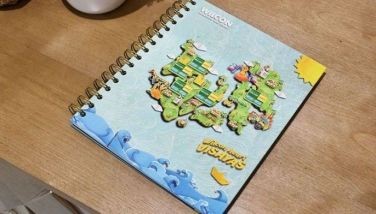The chinese in old Cebu
CEBU, Philippines - We are now inthe middle of summertime; kids are surely busy with their swimming lessons, music and arts tutorials, dance lessons, and other summer activities. It is vacation time, after all.
While time in front of the computer indulging in favorite games is fun, kids must also spend time doing more meaningful and educational activities.One way is to visit museums and connecting with our past. And what better chance to do so than in the “Gabii sa Kabilin†on May 30?
From 6 p.m. to midnight, museums and heritage sites in the city open their doors to guests, and a few of them offer activities specially for kids. One particular museum is “Museo Parian sa Sugbo.â€
On this one magical night, the “Museo Parian sa Sugbo,†located along Zulueta St., in barangay Tinago, will relate the story of how the Chinese food peddlers in the past sold noodle soup, taho, siopao, and siomai. Aside from a storyteller, there will also be people in complete Chinese costumes enacting the scenes! Now, that is one fun event kids should not miss.
The Cebu Chinese of the past were known for their industry and hard work, which they showed by going around the neighborhood, their goods a welcome burden, which they brought right to their customers doorsteps.
That was hard compared to just setting up a store and waiting for customers to come. But the Chinese, particularly those in the old Parian District, were good examples of hard work children could learn from. “Museo Parian sa Sugbo†is owned by a Chinese family, so the storyteller surely knows what he would be telling about.
There will also be delights for everyone, the kids included of course, because the museum will serve “taho†and “sherbet†(Turkish for frozen dessert) for free. Definitely a come on for kids, right?
While the kids and visitors enjoy the food, they could immerse themselves in the history of the museum—that it was built in the 1730s as home of the Jesuit priests who were doing missionary work in Cebu at the time. With its pieces of porcelain, ceramic, and pottery that date back to the 1580s to the 1640s, the museum displays provide visitors a view into Parian’s history as a trading center.
An interesting trivia is that the owner originally intended to tear down the structure because he wanted to build a warehouse on the very spot.He changed his mind when he realized the house’s significance to Cebu’s heritage. This explains why the museum is inside a warehouse!
Kids, together with their parents, will have to find out the rest of the museum’s interesting items by themselves, by actually touring the museum to see with their very eyes the treasures it has.
Spearheaded by the Ramon Aboitiz Foundation Inc., “Gabii sa Kabilin†is just for one night.So kids, don’t dare miss this one particular night and see the museums, especially the “Museo Parian sa Sugbo.â€
Surely, after hearing the story of the industrious Chinese of Cebu’s past, you have an important and wonderful story to share with your classmates at school in June.
- Latest


























